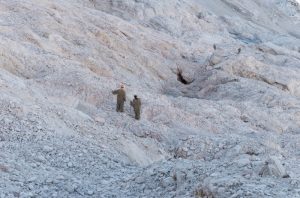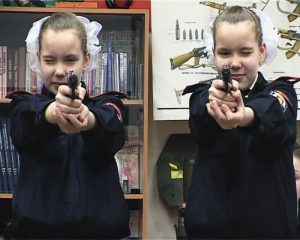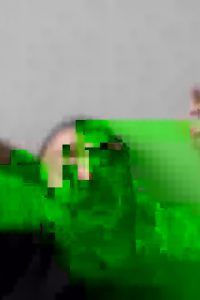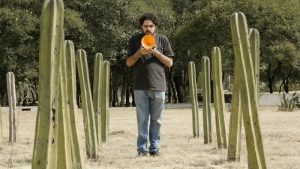The Open, by Mattia Casalegno, is a mask that wraps around your face and forces you to smell a fresh patch of grass and listen to your own breath.
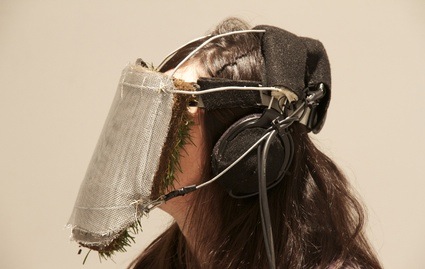 The device defines also a sensory territory constructed by the rhytm of the breath, which is diffused from the headphones with a 1.5 sec. delay.
The device defines also a sensory territory constructed by the rhytm of the breath, which is diffused from the headphones with a 1.5 sec. delay.
The work plays with the Deleuzian notion of ritornell, and about the quality of sound to define a territory. The space defined by the sound of breathing is in a state of costant imbalance between the physical act and its sensory perception and traces an unstable relationship with the intimate environment the garment reproduces.
I usually do not accept submissions -no matter how fantastic they are- on my blog. There are several reasons for that. The main one is that i prefer to see and experience the work before i write about it. Another reason is that long overdue stories are already preventing me from sleeping at night (yes, it’s that bad!) But once in a while there’s a submission that makes me want to go further. Hence the following conversation with Mattia Casalegno:
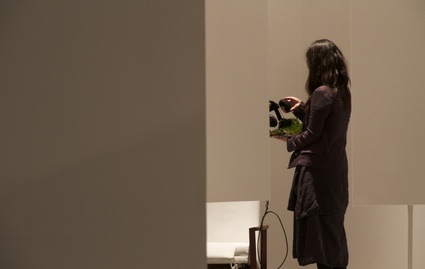 How long are participants advised to wear the mask to make sure that they really get the experience? Are they willing to wear the mask longer or do they report feelings of discomfort (physical or not)?
How long are participants advised to wear the mask to make sure that they really get the experience? Are they willing to wear the mask longer or do they report feelings of discomfort (physical or not)?
They can wear it as long as they want. There have been people who wear it for few seconds or several minutes, some who were allergic and some who just refused to wear it. Others came back to experience it several times. In the room there’s also a chair similar to the ones you could find in a psychanalyst office, and overall the setting is meant to be inviting.
Despite the chair, after a certain amount of time, the experience can become slightly unsettling due to tightness of the mask. I liked the idea of constructing an experience that is comfortable but at the same time disturbing, enveloping but claustrophobic. Inside it’s warm, and you can hear your own breath, which usually induces relaxation and security, but after a while you feel the tightness and realize that the sound of your breath is actually delayed, resulting in a distorted experience.
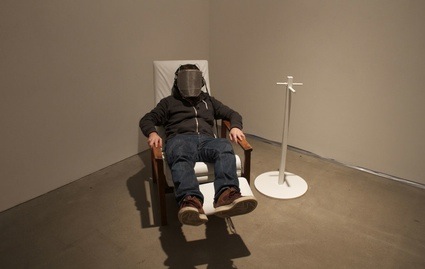 More generally, what were the reactions of the people who tried the mask on?
More generally, what were the reactions of the people who tried the mask on?
Actually, they were very disparate. Some people instantly freaked out, thinking of all the other people’s faces that worn the mask. Other just liked the idea to lay down and relax for a while. Some had memories of their childhood, others speculated about death.
There’s obviously something very primordial in the act of putting your entire face so close to the soil, something referring to the earth, the womb. But also something very sexual which not only refers to the birth, but to an act of exploration, immersion and abandon implied in sex, which is an irresistible and frightening power. I first had the idea for this piece thinking about sex with my lover but later I found out that it had more to do with a universal experience and has multiple meanings.
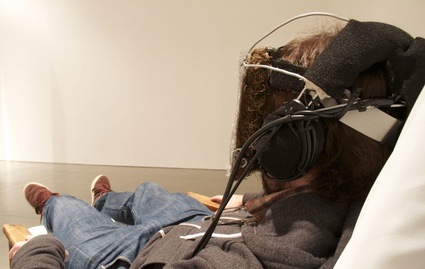 The Open, as you write, “plays with the Deleuzian notion of ritornell, and about the quality of sound to define a territory.” Can you expand on this? Why for example did you associate breathing with turf?
The Open, as you write, “plays with the Deleuzian notion of ritornell, and about the quality of sound to define a territory.” Can you expand on this? Why for example did you associate breathing with turf?
I liked the idea of sound defining a territory and I tried to apply this notion to the project. Deleuze and Guattari in “Thousand Plateaux” talk about the capacity of structured sounds, notably rhythm, to define a space: an example the birds who negotiate their interaction spaces with their refrains – which is the english world for “ritornell”, or the child who softly sings a song in the dark. The refrain is the first hint of a stable and quiet center, the primordial will to organize chaos. The idea of rhythm emerging from chaos belongs to any cosmogony, but what happens if, instead of externalizing such a process, we trace it from the inside, and thus define a kind of “inner cosmogony”? We could then define territories between our sensory system and our unconscious, libido, fears, etc. As we enter the mask, the refrain is our own breathing, but the territories thus delineated somehow don’t overlap, are slightly conflicting because of the delay, there’s an inconsistency between the act and the perception of it.
Did you try to convey other kinds of experience(s)? Maybe a reconnection of the urban dweller with nature (if a piece of turf can be called nature of course)? Or an attempt to make them engage with senses that are less solicited by our dominantly visual culture?
Yes, the sod can be a reference to nature, although a very rationalized and domesticated one. This kind of grass reminds us of the idealized landscapes and the organized fields of the English garden, a symbol of dominion of man over nature, if we want. The fact that the experience gets slightly anxious underlines somehow this kind of schizo-relationship with Nature, where we we are captivated by our natural environment but also afraid of it.
Why did you name your piece The Open when people’s face is so dramatically enclosed inside a mask?
I wanted to play with this duality of proximity and distance, this exaggerated physical proximity and the space left between the perception of an outside and an inside, the environment and the self. The title is also borrowed from the name of a book by the Italian philosopher Giorgio Agamben, written in 2002: “The Open: Man and Animal,” in which he investigates the opening of such a space and the differences between being human and animal. Maybe this goes a bit too far from the original idea for this piece, but I like this quote:
“What is man, if he is always the place―and, at the same time, the result―of ceaseless divisions and caesurae? It is more urgent to work on these divisions, to ask in what way―within man―has man been separated from non-man, and the animal from the human, than it is to take positions on the great issues, on so-called human rights and values.”
Now for a more personal question. You have been working actively as a multidsciplinary artist for a decade. Yet, last year, you decided to move to the U.S. and attend the Design | Media Arts graduate program at University of California Los Angeles. This is imho the best school for media art and interactive design you could have chosen but what made you think you needed to go back to school? Did you feel that your practice was not enough and that you needed to acquire new skills?
I don’t know, maybe was less about acquiring skills and more a need to put in prospective my work, to step back and see where I was going with all that. I was also working a lot with video and live-media performances and I wanted more time to experiment with different media and follow some obsessions I had in mind, so I felt that to fly to an other continent where I knew nobody was a good opportunity to
concentrate on my work. Also, I had an appointment with Johanna Reed.
The D|MA program has a great faculty covering almost any field of media art, the approach is very much oriented to any kind of media. It’s a small and very intense program, you end spending all your time there, and get to see people so often that after a while it’s like having a big family, I’m already sad this is my last year here.
Thanks Mattia!

